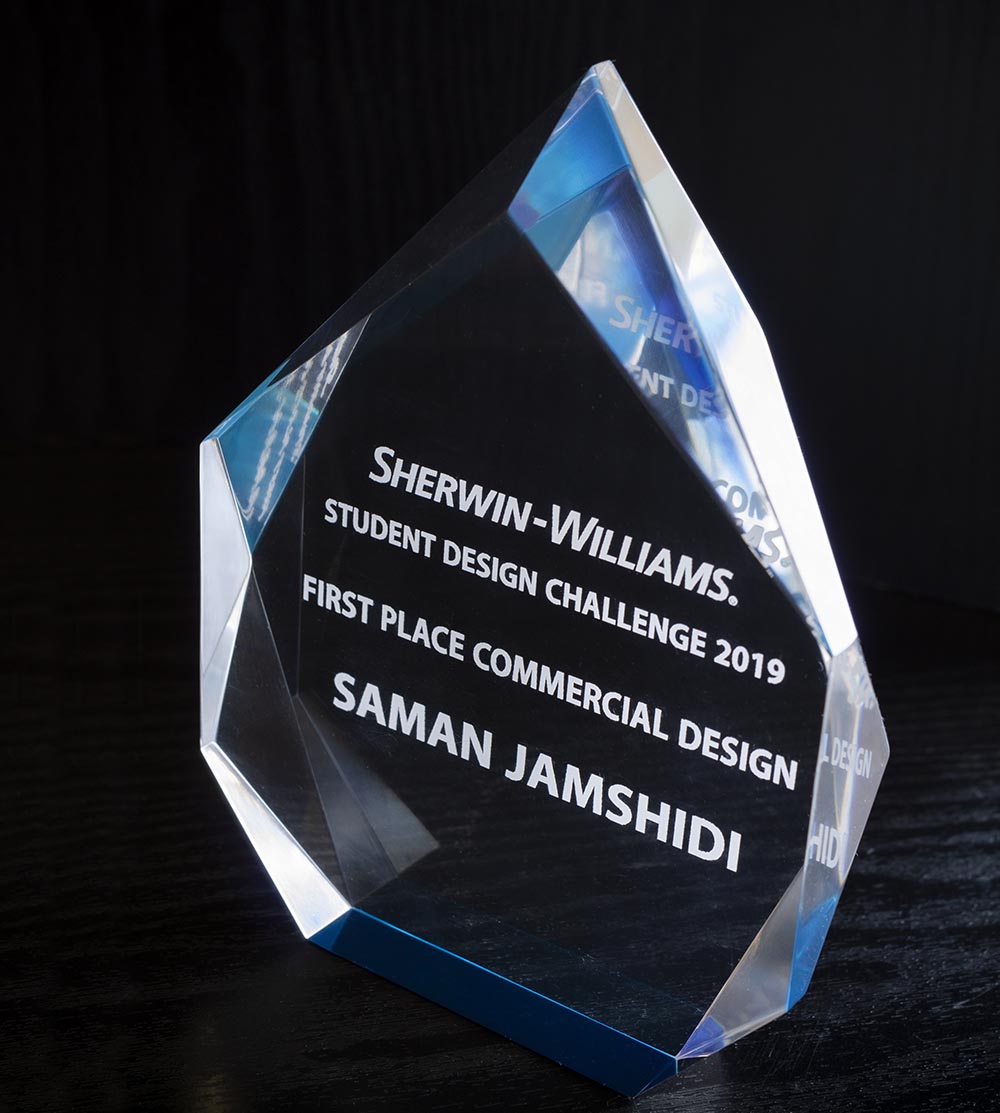Doctoral Student Wins Sherwin-Williams Student Design Challenge
Evidence-Based Design: A Medical-Surgical Patient Room
 Saman Jamshidi, an Interior and Environmental Design graduate student was recently
awarded first-place in the Sherwin-Williams Student Design Challenge commercial category.
Saman's design showcased a medical-surgical patient room, with the main goal of incorporating
colors in a way that contributes to positive patient outcomes.
Saman Jamshidi, an Interior and Environmental Design graduate student was recently
awarded first-place in the Sherwin-Williams Student Design Challenge commercial category.
Saman's design showcased a medical-surgical patient room, with the main goal of incorporating
colors in a way that contributes to positive patient outcomes.
"This competition was about the use of Sherwin-Williams colors in residential and commercial environments," Saman said. "Studies suggest that well-design hospital environments can reduce patients' stress and according to the theory of supportive design, reduction in stress level can improve positive patient outcomes. Thus, I chose a soothing color palette which may help patients and their family members to cope with their stress and promotes a sense of well-being."
When Saman heard the news, he says he was pleased and honored that his design has gained national recognition. Saman thanks his professors in the Department of Design for providing constructive comments throughout the design process.
"My ultimate goal as a designer and researcher is to improve people's lives, especially who are more vulnerable, such as patients, the elderlies, people with low vision," he said. "It is so fulfilling to walk on this path and create supportive and healing environments that improve the quality of people's lives."
 Saman is currently pursuing his doctoral degree in Interior and Environmental Design
at Texas Tech. With a background in architecture, the Ph.D. degree was a perfect fit
for Saman's career goals.
Saman is currently pursuing his doctoral degree in Interior and Environmental Design
at Texas Tech. With a background in architecture, the Ph.D. degree was a perfect fit
for Saman's career goals.
"As an architect, the fact that most design decisions in practice are based on normative theories was a serious concern for me," Saman said. "While the lives of many people and also the client's investment is affected by design decisions, I was feeling a great lack of empirical evidence that assists designers to make informed decisions."
Saman felt that with evidence-based design being a relatively young movement in the design world, he wanted to address that gap to provide clients with informed design choices.
"My research focuses on healthcare facilities and my interests include patient's outcomes, patient's safety, wayfinding, and evidence-based design," Saman said. "By deciding to pursue my study toward Ph.D. and doing research, I wanted to be among those people who are moving the design profession to the next level."
College of Human Sciences
-
Address
College of Human Sciences, Texas Tech University, P.O. Box 41162, Lubbock, TX 79409-1162 -
Phone
(806) 742-3031 -
Email
hs.webmaster@ttu.edu
